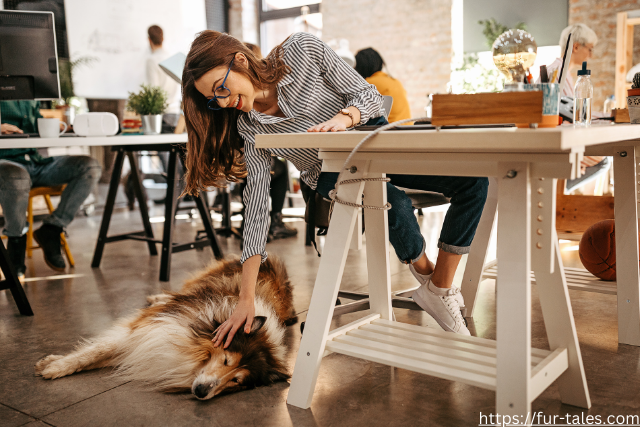
How to Teach a Dog to Stay Calm in Busy Environments?
Taking your dog into a busy environment—whether it’s a crowded park, a bustling city street, or a pet-friendly café—can be overwhelming for them. Loud noises, unfamiliar people, and other dogs can cause excitement, anxiety, or even reactive behavior.
The good news? With the right training, patience, and consistency, you can teach your dog to remain calm and focused no matter where you take them.
Here’s a step-by-step guide to helping your dog stay calm in busy environments. ????✨
1. Start with Basic Obedience Training at Home
Before exposing your dog to crowded places, they should master basic commands in a quiet, controlled environment.
✔️ Key commands to teach first:
- Sit – Helps your dog stay still when needed.
- Stay – Essential for keeping them controlled in busy areas.
- Look at Me – Encourages focus on you instead of distractions.
- Leave It – Stops them from reacting to tempting objects or food.
???? Tip: Use positive reinforcement (treats, praise, or toys) to make learning fun and rewarding!
2. Gradually Introduce Mild Distractions
Before heading into a crowded space, increase distractions slowly so your dog learns to stay calm.
Training steps:
1️⃣ Practice commands in your backyard or a quiet park.
2️⃣ Introduce small distractions (e.g., people walking by, mild background noise).
3️⃣ If your dog stays calm, reward them immediately with a treat.
4️⃣ Gradually increase distractions, such as light traffic, bicycles, or other dogs at a distance.
???? Tip: If your dog starts getting too excited or anxious, move further away from the distraction and reward calm behavior.
3. Use the “Look at Me” Command for Focus
In a busy setting, your dog may get distracted by sounds, smells, and movement. Teaching them to focus on you will help them stay calm.
???? How to train:
✔️ Say “Look at me” while holding a treat near your face.
✔️ Reward your dog immediately when they make eye contact.
✔️ Repeat regularly until they respond without hesitation.
✔️ Use this command when you notice them getting distracted in a busy place.
???? Tip: Always bring treats or a favorite toy when out in public. Rewarding good behavior keeps your dog engaged.
4. Expose Your Dog to Busier Environments in Small Steps
Instead of going straight to a crowded street, gradually introduce your dog to busier places over time.
Training Progression:
Quiet park → Moderately busy park → Outdoor café with light traffic → Busier streets → Crowded event (if necessary).
If your dog shows stress (panting, pulling, barking), step away, let them relax, and try again at a lower intensity.
???? Tip: Short training sessions (5-10 minutes) in new places prevent overwhelm.
5. Teach “Settle” for Relaxation in Public Spaces
Dogs need to learn how to relax on command, especially in places where you might sit for a while (cafés, waiting areas, etc.).
How to train:
✔️ Use a mat or blanket as a signal for your dog to relax.
✔️ Say “Settle” and guide them into a lying down position.
✔️ Reward calm behavior with treats or gentle petting.
✔️ Gradually increase the time they stay settled.
???? Tip: Practice at home first before trying it in a public setting.
6. Use Desensitization to Loud Noises
Busy environments are filled with unexpected noises—horns, sirens, people shouting, and more. Help your dog get used to these sounds gradually.
How to train:
✔️ Play recordings of city noises at low volume while your dog is relaxed.
✔️ Reward them for staying calm.
✔️ Slowly increase the volume over time to build tolerance.
✔️ Expose them to real-world noises from a distance before getting closer.
???? Tip: If your dog reacts fearfully, don’t force them forward—move away and reward calm behavior.
7. Keep a Loose Leash & Use Proper Equipment
Dogs tend to pull or lunge in busy environments out of excitement or nervousness. Keeping them under control makes a huge difference.
✔️ Use a front-clip harness or head halter if your dog pulls.
✔️ Hold the leash with a relaxed grip to prevent tension.
✔️ Teach loose-leash walking by stopping whenever they pull and rewarding calm walking.
???? Tip: A tight leash creates stress for both you and your dog—keep it loose to encourage relaxation.
8. Reward Calm Behavior & Ignore Overexcitement
Your dog will naturally get excited in new environments, but it’s important to reinforce calm behavior.
What to do:
✔️ Reward calm walking, relaxed body language, and quiet behavior.
✔️ Ignore jumping, whining, or pulling—only give attention when they settle.
✔️ If your dog gets too excited, stop, let them calm down, then continue.
???? Tip: Practice patience! The more you reward calmness, the more your dog will naturally stay relaxed in public.
9. Provide Mental Stimulation Before Going Out
A tired dog is a calm dog! Before heading into a busy environment, give your dog some mental or physical exercise to drain excess energy.
✔️ Play a game of fetch before going out.
✔️ Use puzzle toys to engage their mind.
✔️ Take them on a short walk before heading into a crowded area.
???? Tip: A well-exercised dog is less likely to overreact to distractions.
10. Be Patient & Keep Training Sessions Short
Every dog learns at their own pace. If they seem overwhelmed, take a step back, and build their confidence slowly.
✔️ Keep outings short and positive—5-10 minutes at first.
✔️ End every training session on a good note (calm behavior + reward).
✔️ Gradually increase the length of exposure over time.
???? Tip: Don’t rush progress! Some dogs take weeks or months to fully adjust.
Image Source: Canva
